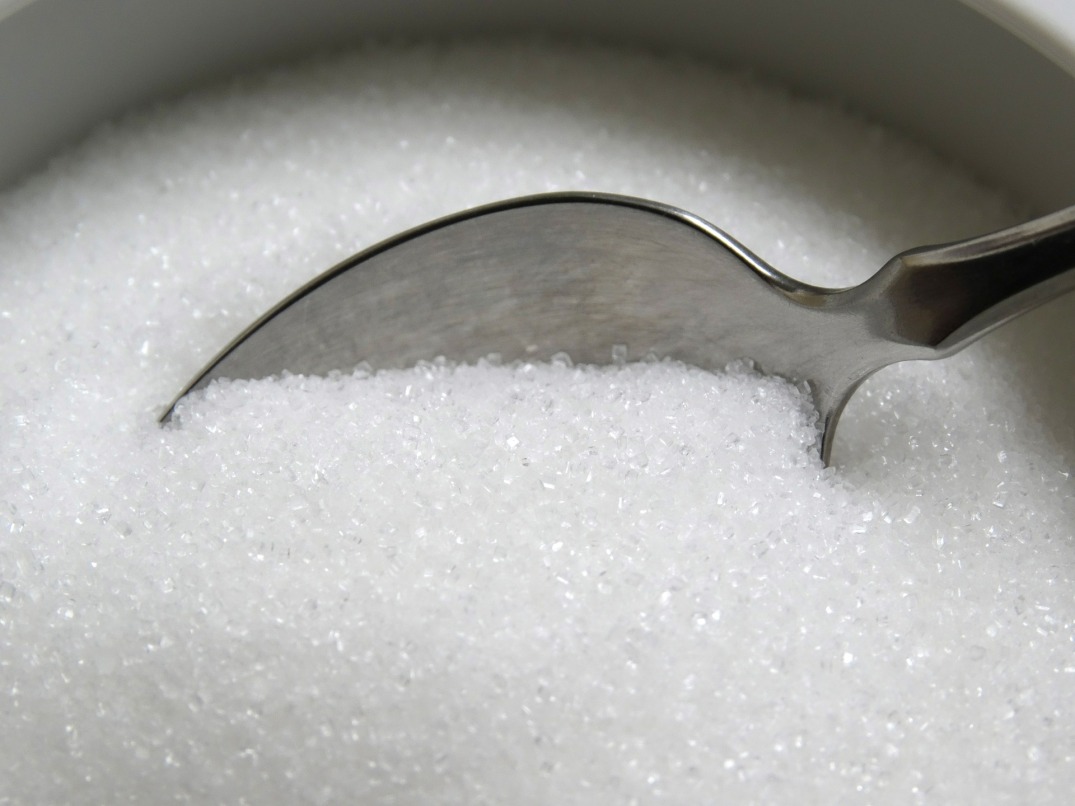What is better, Low Carb or Low Fat? And what about Paleo? Vegan? Different diets work for different people. My experience taught me that a balanced diet consisting of 40% protein, 30% carbs and 30% fats is the best to stay healthy and cravings free.
I also like to eat every 3 hours and each meal I prepare includes a protein, carbohydrate, and fat source. Examples of protein rich foods are egg whites, chicken breast, lean ground turkey or beef (no more than 7% fat), lean steak, and fish. Greek yogurt and cottage cheese are other good options. I personally cannot stand the taste and texture of cottage cheese and the only time I will buy it is to add it to pasta sauces for a creamy taste or as an ingredient in baked goods. Although Greek yogurt with some fruit can be a great snack, dairy products tend to be high in sugar (lactose).
Brown rice is my go to complex carb choice for lunch meals and combined with chicken breast and coconut oil makes a delicious staple that never gets old. You can also try Jasmin rice as a flavorful alternative. Another secret tip: vegetable broth! You can cook virtually anything in broth and it is much healthier than using butter! If you are watching your sodium intake, try low sodium broth.
 But my favorite meal is breakfast and the best part of each day is the morning. Every morning is like a fresh start. The sun is shining, coffee and breakfast awaits you and the possibilities are endless. Last weekend I grabbed a bunch of left over baking ingredients from my pantry and mixed them together in hope of creating breakfast muffins. Here the recipe for the made up, clean, healthy, and accidentally delicious breakfast treats:
But my favorite meal is breakfast and the best part of each day is the morning. Every morning is like a fresh start. The sun is shining, coffee and breakfast awaits you and the possibilities are endless. Last weekend I grabbed a bunch of left over baking ingredients from my pantry and mixed them together in hope of creating breakfast muffins. Here the recipe for the made up, clean, healthy, and accidentally delicious breakfast treats:
- 0.5 cup spelt flour
- 1 cup oat flour (grind oats in blender)
- 0.5 cup oats
- 0.25 cup ground flax seeds
- 1 cup natural apple sauce (no added sugar)
- 4 scoops of protein powder (vanilla is a good choice)
- 1 cup unsweetened vanilla almond milk
- 1 tsp baking soda
- 1 tsp baking powder
- 2 tsp cinnamon
- raisins to taste
- 20 min @ 350 degrees Fahrenheit
I also made clean jam to go with it: Buy a bag of mixed frozen berries, let it defrost and empty it into a pot. Use a masher to turn the berries into a paste with small chunks. Add a bag of powdered gelatin and bring to a boil while stirring. Add 2 TBSP of chia seeds into the mixture. Pour the jam into a jar and let cool. Done!

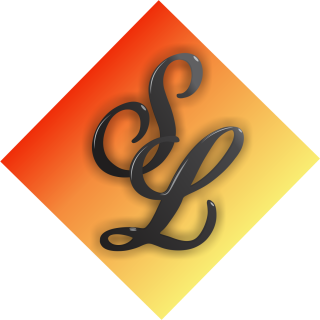


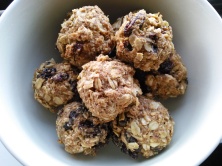

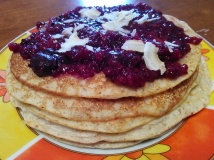
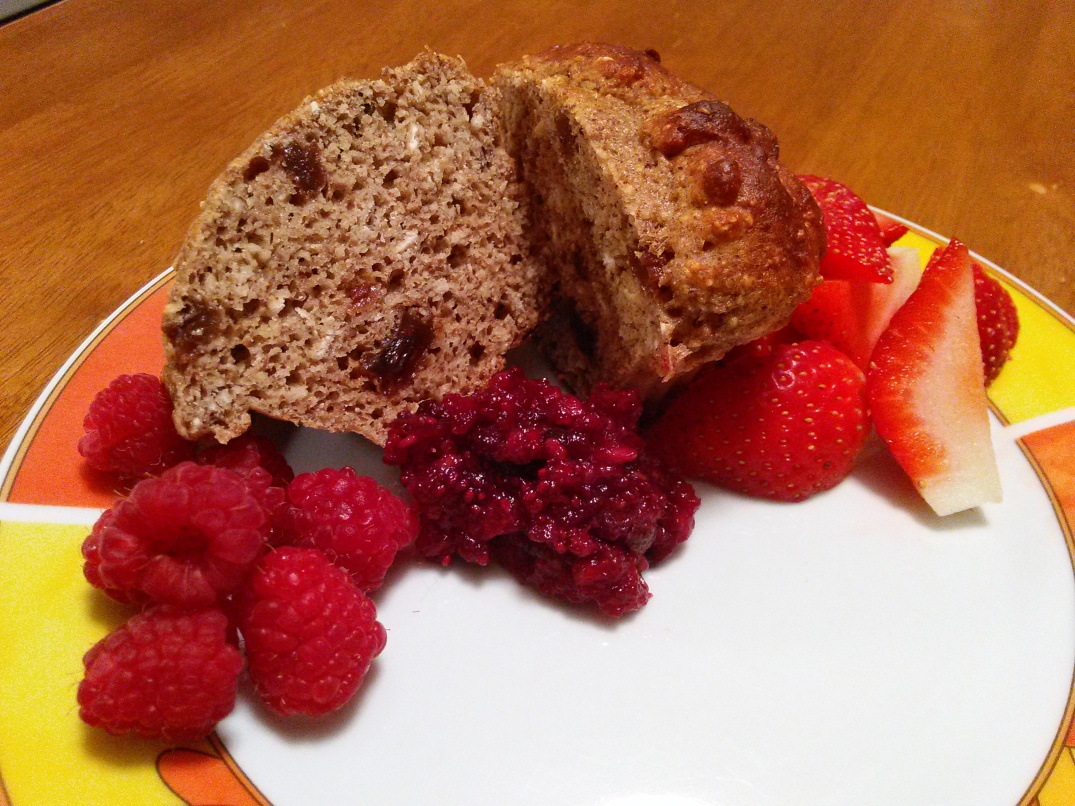
 But my favorite meal is breakfast and the best part of each day is the morning. Every morning is like a fresh start. The sun is shining, coffee and breakfast awaits you and the possibilities are endless. Last weekend I grabbed a bunch of left over baking ingredients from my pantry and mixed them together in hope of creating breakfast muffins. Here the recipe for the made up, clean, healthy, and accidentally delicious breakfast treats:
But my favorite meal is breakfast and the best part of each day is the morning. Every morning is like a fresh start. The sun is shining, coffee and breakfast awaits you and the possibilities are endless. Last weekend I grabbed a bunch of left over baking ingredients from my pantry and mixed them together in hope of creating breakfast muffins. Here the recipe for the made up, clean, healthy, and accidentally delicious breakfast treats:
